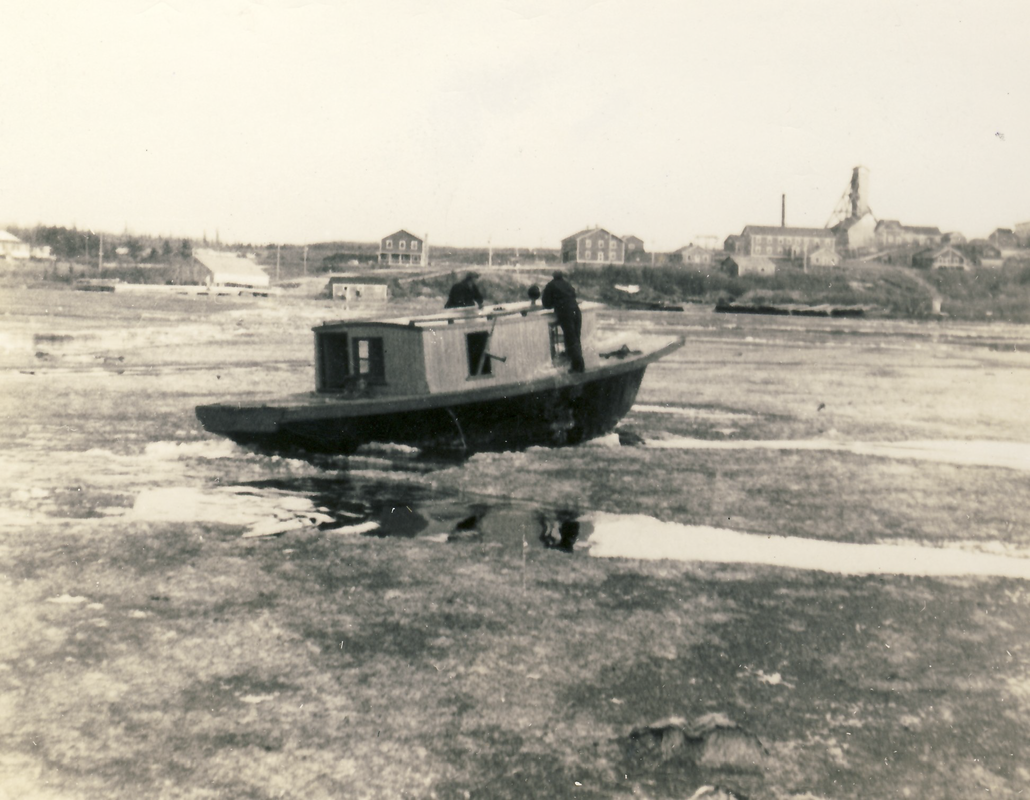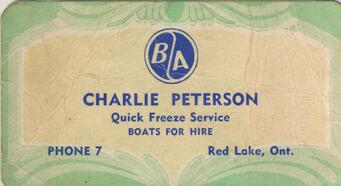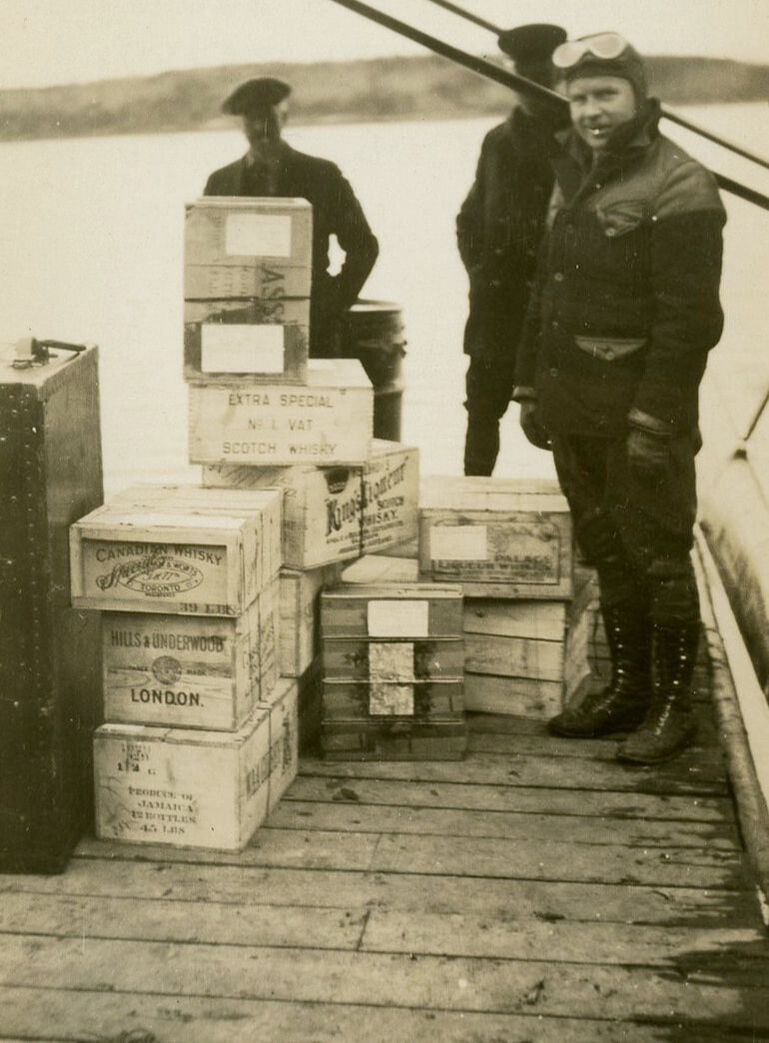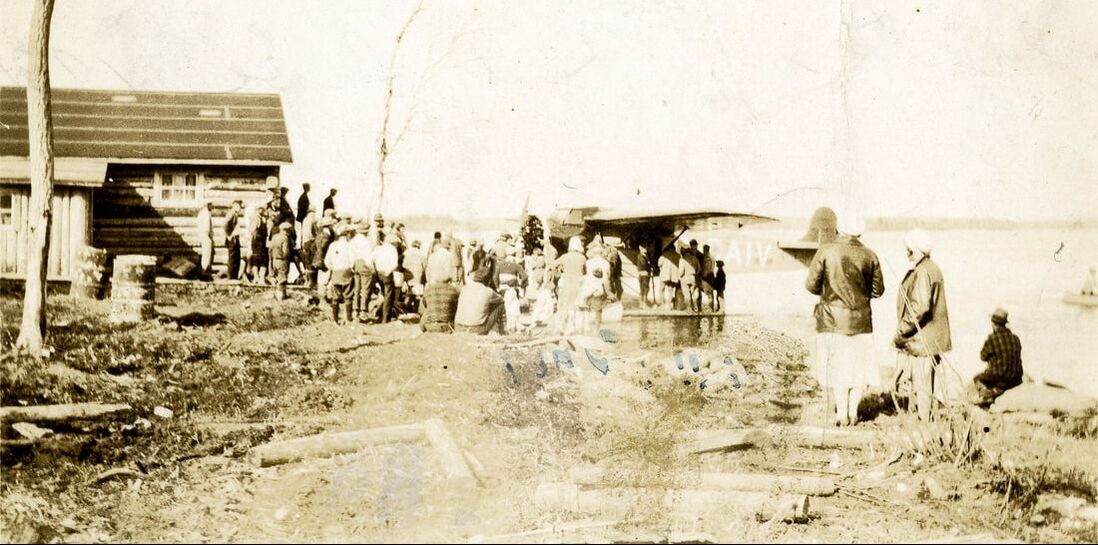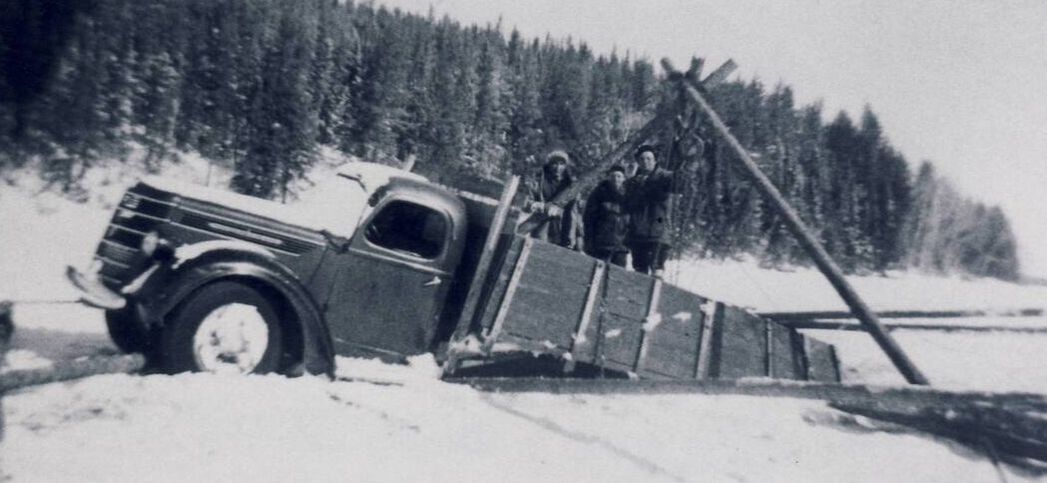|
Transportation to Red Lake was heavily reliant on the
weather. Two times each year, Red Lake was completely inaccessible. No one could travel to or from Red Lake during break-up (when the ice was thawing in spring) or freeze-up (when the ice was freezing at the beginning of winter). Break-up and freeze-up were dangerous times to travel as all early methods of travel depended on the lakes. At the beginning of freeze-up, there was a period when the ice was too thin to hold a person. When the ice starts to freeze, people took measurements of the ice thickness. The ice needed to be 7.5–10 cm (3–4 inches) thick for a person to walk on it without falling through. Heavy dog sleds, snowmobiles and planes needed to make sure that the ice was thick enough to withstand their weight before travel began. Tractor trains used to transport freight in the winter had the longest to wait as their cargo often weighed several tonnes. Depending on the weather conditions the lakes and rivers could take 1 to 2 weeks (or longer) to freeze to traversable depths. Clear blue ice was the best to travel on, while slushy ice was not as safe. After the ice is very thick, it is still necessary to be careful. Moving too fast on the ice can cause it to crack. It is critical to move at a steady pace while moving across the frozen lakes. The currents underneath the ice could also cause the ice to be thinner. Even though the ice is often thick in the height of winter, people needed and still need to be careful. It is always important that people can escape whatever type of transportation they are using while crossing over the ice. Ice breaker on Howey Bay, 1938Charlie Peterson business card
|
PILOT TED STULL; Part of Liquor supply
|

